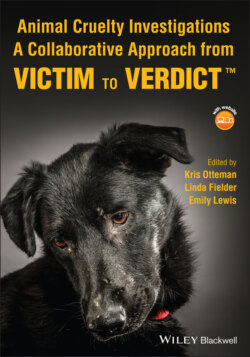Читать книгу Animal Cruelty Investigations - Группа авторов - Страница 107
2.1 The History of the Five Freedoms and Their Impact on Animal Welfare Laws
ОглавлениеThe Five Freedoms were developed in the 1960s to establish standards of minimum care for animals, particularly those raised for food, and have since been accepted in the United States and across the world [2]. They are the basis from which laws concerning the care and treatment of captive animals developed. An understanding of the Five Freedoms acts as a foundation for animal cruelty investigations, when determining if an animal's basic needs are being adequately met. The Five Freedoms are uniformly applicable to animals in livestock and farming operations, breeding and shelter facilities, and any environment where an animal is confined or enclosed in any manner, including animals kept as pets. They are as follows [3]:
Freedom from Hunger and Thirst: by ready access to fresh water and a diet to maintain health and vigor.
Freedom from Discomfort: by providing an appropriate environment including shelter and a comfortable resting area.
Freedom from Pain, Injury, or Disease: by prevention or rapid diagnosis and treatment.
Freedom to Express Normal Behavior: by providing sufficient space, proper facilities, and company of the animal's own kind.
Freedom from Fear and Distress: by ensuring conditions and treatment which avoid mental suffering.
The Five Freedoms, along with the Animal Welfare Act [4], a federal law that sets minimum standards of care for animals in breeding and laboratory environments, serve to memorialize the fact that a failure to provide for an animal's basic needs is both inhumane and unlawful, and that animals deprived of these provisions suffer pain and mental anguish.
